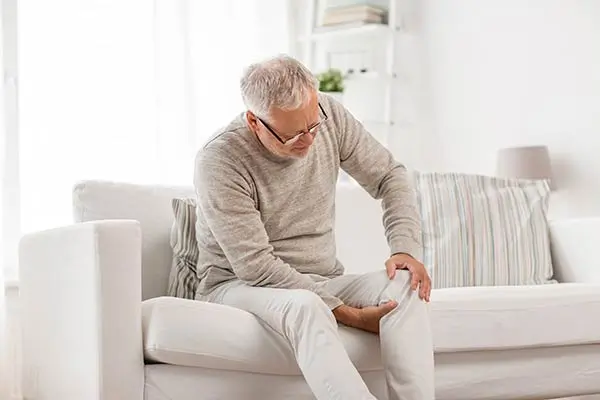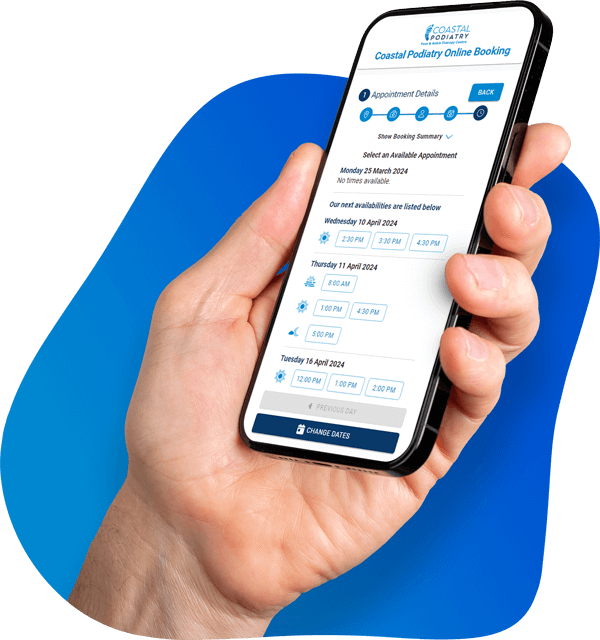Sharp, stabbing pain on the outside of your knee isn’t just uncomfortable – it’s downright disruptive. Whether you’re a runner hitting your stride or simply walking up stairs, that nagging discomfort can stop any normal activity in its tracks.
Outside knee pain strikes without discrimination, affecting weekend warriors and office workers alike. The good news? This common knee injury responds well to proper treatment. Our experienced podiatry team has successfully guided countless patients from initial pain to full recovery. Let’s explore the key signs, causes and proven treatments that will help you understand and overcome a lateral knee injury.
Understanding Lateral Knee Pain
What exactly happens when your outer knee hurts? The answer lies in understanding the complex structure of your knee joint and the various medical conditions that can affect it.
What Causes Pain on the Outer Knee?
The outer knee houses several important structures that can be seriously painful when injured. Iliotibial Band Syndrome tops our list of common causes – picture a thick rubber band running from your hip joint to your knee becoming irritated and inflamed. The pain often feels like a burning sensation on the outside of your knee when you experience iliotibial band tightness.
Another frequent culprit is the lateral meniscus tears. These occur when the knee’s natural shock absorber gets damaged during a sudden twist of the knee during movement.
Common Symptoms to Watch For
How do you know if you’re dealing with lateral knee pain? Look for these telling signs:
- Sharp, knife-like pain along the knee’s outer portion
- Increased discomfort while walking downhill or climbing stairs
- Noticeable swelling around the painful area
- Your knee feeling unstable or likely to give way
Pay attention to when the pain strikes. Many patients notice it first after finishing an activity but, as time goes on, the pain might start appearing earlier during exercise.
Risk Factors and Triggers
Could you be more prone to lateral knee pain? Several factors increase your risk:
Being overweight places extra stress on your knee joints – even during routine activities like walking. Athletes face their own challenges, particularly in sports demanding quick directional changes.
Watch out for these additional risk factors:
- Excessive weekly running or walking
- Regular exercise on uneven ground
- Weak hip muscles
- History of knee problems
Understanding these patterns helps pinpoint the root cause of your pain. The clearer the cause, the more targeted and effective your treatment can be.
Common Causes of Lateral Knee Pain
Why does the outside of your knee hurt? The answer typically falls into three distinct categories. Let’s examine each potential cause to help you identify what might be triggering your pain.
Sports and Exercise-Related Causes
Iliotibial Band Syndrome stands out as a primary culprit for lateral knee pain among athletic people, responsible for 12% of all running injuries (particularly common overuse injuries). This painful and common condition often affects:
- Distance runners pounding the pavement
- Cyclists pushing through long rides
- Court athletes like basketball players
- Winter sports enthusiasts, particularly skiers
Poor training choices often spark these problems. Suddenly ramping up your exercise intensity or regularly running on slanted surfaces can irritate the knee’s outer structures.
Age and Wear-Related Causes
Does your knee pain worsen with age? You’re not alone. Osteoarthritis frequently develops after age 50, gradually wearing away the smooth piece of cartilage that cushions your knee joint. Simple activities become increasingly difficult, and many patients notice their symptoms flare up during cold spells or after sitting too long.
Injury-Related Causes
Sometimes lateral knee pain strikes suddenly. Lateral Collateral Ligament (LCL) tears occur when quick direction changes or hard impacts/direct blows stress the outer knee. Football tackles, skiing mishaps and soccer movements often lead to these injuries. The lateral meniscus proves equally vulnerable, especially during sudden twist movements with a planted foot.
Here’s what makes knee injuries particularly tricky: they rarely happen alone. Take LCL tears for instance – they frequently bring along other knee complications. Understanding these relationships helps guide proper treatment choices.
Diagnosing Lateral Knee Pain
Should you see a doctor for your knee pain? The answer depends on several key factors. Let’s explore when professional help becomes necessary and what you can expect during diagnosis.
When to Seek Medical Help
Your knee pain needs medical attention if you notice:
- Daily activities becoming difficult due to persistent pain
- Difficulty putting weight on the affected leg
- Obvious swelling or feelings of instability/lack of strength
- Pain that keeps getting worse
- Your knee giving way unexpectedly
Common Diagnostic Procedures
What happens during your appointment? The journey starts with a thorough physical examination. A qualified professional podiatrist will carefully assess your knee’s movement range while checking for swelling, tender spots and warmth.
Two specific tests help pinpoint the problem:
- The Noble Test – gentle pressure application during knee extension
- The Ober Test – identifies a tight band of tissue that might cause pain
Sometimes your knee tells a story only imaging can reveal:
- X-rays show the bone structure
- MRI scans capture detailed soft tissue images
- CT scans provide cross-sectional views
Occasionally, your doctor might need a small sample of knee joint fluid to check for inflammation or infection.
Understanding Your Diagnosis
How do podiatrists determine diagnoses for knee pain? They’ll ask specific questions about your pain:
- What is the location of knee pain?
- Does it feel sharp or achy?
- When did the pain begin?
- Which activities make it worse?
Runners receive special attention to movement patterns and pain timing. Many notice discomfort either after finishing their run or minutes into their activity.
Don’t wait too long to seek help. While conservative measures like rest might solve minor knee pain, persistent symptoms need professional evaluation to prevent lasting problems.
Treatment Options and Recovery
What’s the best way to treat lateral knee pain? The path to recovery follows clear stages, starting with immediate relief and building toward long-term healing.
Immediate Pain Relief Methods
Your first steps after experiencing outside knee pain matter significantly. The POLICE method proves most effective:
- Protect your knee from additional injury
- Optimal Loading – return to activity gradually
- Ice pack on the area for 20-minute periods every few hours
- Compression with a proper knee bandage
- Elevation – keep your knee above heart level
Medical Treatment Approaches
Does your knee pain need medical intervention? The answer depends on what’s causing your discomfort. Most patients start with simple solutions before moving to stronger treatments. Over-the-counter anti-inflammatory medicine often provide good initial relief.
Stubborn pain might need more powerful solutions:
- Corticosteroid shots calm severe arthritis flares
- Hyaluronic acid injections help joints move more smoothly
- Platelet-rich plasma (PRP) treatment reduces inflammation naturally
Rehabilitation Exercises
Strong leg muscles protect your knee joint – that’s why exercise plays such a crucial role in recovery. Your rehabilitation strength exercises and strength training journey typically unfolds in two key phases:
Early Phase: How should you start? Gentle movements come first. Working closely with a professional podiatrist, you’ll perform simple flexibility exercises 2-3 times weekly.
Progressive Phase: As pain decreases, you’ll tackle stronger exercises:
- Quadriceps strengthening
- Careful hamstring curls
- Controlled calf raises
Your podiatrist will watch your form carefully, ensuring each movement helps rather than hurts.
Most patients following their prescribed plan notice significant improvement within 4-6 weeks. Remember: proper guidance makes the difference between temporary relief and lasting recovery.
Conclusion
Outside knee pain shouldn’t control your life. While the initial discomfort might feel overwhelming, proper treatment leads to successful recovery. Some patients find relief through basic care, while others need more structured treatment approaches.
The key lies in proper diagnosis – identifying exactly what’s causing your pain guides the most effective treatment path. Persistent lateral knee pain calls for professional evaluation. Our team of qualified, experienced podiatrists will help relieve the pain of those nagging aches and prevent them becoming lasting problems.
Think of your knee health as an investment in your future mobility. Take that first step toward healing today. Your knees will thank you tomorrow.




